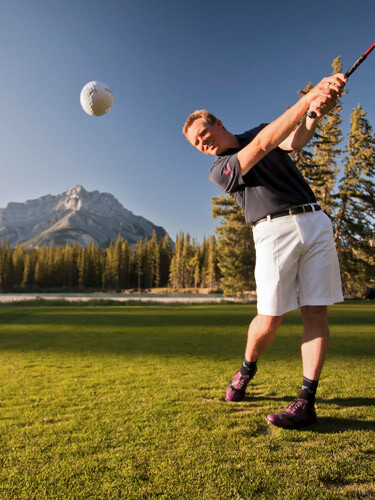
There are many options when it comes to golf clubs. The most common types are the drivers, fairway woods (Hybrids), irons, irons, and hybrids. The type that you choose depends on how skilled and competitive you are. Woods are great for long drives, and they are a good choice for players with trouble keeping the driver straight. Woods can also be used in fairway when the driver is too far away. However, they don't have as much forgiveness as shorter irons and are less susceptible to error. They're also more difficult to hit flush out of the rough and in tricky lies.
Driver
The driver is arguably the most important club in the game, and it is also the hardest to master. The driver's face is the largest and most difficult to hit, so it is essential that you correctly tee-off. Other golf clubs are used for long shots, such as the woods. Woods are large-headed, hollow-bodied clubs that can be used when a golfer lies at least one hundred fifty meters from the green.
Fairway woods
Fairway woods are a great choice for golfers who want to hit the ball as far as possible without sacrificing accuracy. They are similar to drivers, but their head shape is different. The fairway wood has a loft between 15-18 degrees. This loft is often adjusted to give the golfer the best possible shot. Keep in mind, however, that poor contact with the ball could negate the benefits of a loft that is higher.

Hybrids
Hybrids are a great option for high and mid handicappers alike, providing consistency, forgiveness, and plenty of distance. However, they come with their share of downsides, so be sure to consider them before making your final decision. Most golfers will find that hybrids are an excellent fit for their style and game. They will improve your ability to control your shots and increase your launch.
Irons
For long shots, irons are a type or golf club you can use. There are many kinds of irons. Some are better for some players than others. Super game improvement irons might be more appealing to a beginner. These irons provide large sweetspots that allow beginners to hit the ball more precisely and further. These irons are also very forgiving. They still produce a decent amount of distance and height.
Woods
The clubhead on a wood has a roughly spherical shape with a flattened so. This shape allows the clubhead to slide easily over the ground during a swing. Traditional wood clubheads were made of ash or beech wood. However, modern clubheads made of composite materials like titanium and hollow steel are available. These are sometimes referred as metalwoods. The first metalwood, the Bombshell, was introduced in 1976 by Pinseeker Golf Corp.
Metal woods
Metal woods for golf clubs have been around for years, but there are a few key differences between them and their more traditional counterparts. They are distinguished by their low spin rate and high launch. These changes have allowed manufacturers to design golf clubs with greater performance potential.

Pitching wedges
Pitching wedges in golf clubs serves two main purposes: to hit the ball high, and then land softly. This is achieved through a steep angle of attack, which causes the club to dig into the turf and produce backspin. This type of shot can sometimes produce a stop at a quarter. This shot also produces extra spin which gives the golfer greater control over the shot.
FAQ
What are the various types of golf courses available?
There are many kinds of golf courses. Some are for beginners and others for experienced players.
Some golf courses are close to lakes, rivers, mountains and forests. Others are found in urban areas. Golf courses range from public parks to private estates.
What happens after a round?
The player with the lowest score at the end of each round wins. However, if two people tie for first place, they both win.
If there are more than three players who tie for the first place after 18 holes they will share the money.
If two people are still tied after 18 golf holes, the tournament commission decides who gets the prize cash.
How do I learn to play golf?
Golf is a skill that takes practice and time. It is possible to improve your game with practice. Here are some tips to help you:
-
Regular practice is important. Golf requires constant concentration. You won't improve your golf skills if you don’t practice enough.
-
Play with people who know how to play. Playing with others can help you develop your own style.
-
Read about golf before you begin practicing. This will help you get a sense of the things you should work on.
-
Don't try to master everything all at once. Start by focusing on one aspect of your game. For example, focus on improving your putting or learning to chip. Move on to the next area of your game when you feel confident.
-
Take lessons. You can learn important things such as stance, swing speed and posture.
-
Try new techniques. Experiment with new grips and stances.
-
Keep records. Record your scores and keep track of your progress. This way you can see where you need to improve.
-
Join a local golf club. There are many clubs around that offer free lessons. These clubs usually have friendly members who are happy to show newcomers the ropes.
-
Hire a coach. You can get guidance from a professional coach on certain areas of your game.
What is a Par?
Par is the number of strokes required to complete a hole. The sum of all the individual scores is used to calculate the score.
There are 18 holes in a round of golf. Each hole has a different rating. The hole with the highest rating is "par 3". It is three strokes from the hole. The "par 5" hole is the lowest rated. It is five strokes away.
Is golfing dangerous?
Although it isn't considered a dangerous sport, golf can cause injury. One example is a broken arm that you could sustain while swinging a clubs.
However, most injuries can be caused by falling from your golf trolley.
What is the difference between a driving course and a putting-green?
A driving range allows players to practice hitting balls from distances of 50 yards to 300 yards. To practice putting, players use putting greens.
Statistics
- Professional golfers typically make between 60% and 70% of greens in regulation. (en.wikipedia.org)
- He shanked the first attempt, but it is estimated his second went more than 200 yards (180 m).[52]Golf courses worldwide. Below are the top 20 countries with the most golf courses as of 2019.[53]CountryNumber of (en.wikipedia.org)
- Buying a set of Titleist or Taylor-Made irons for nearly $1,000 is simply not necessary and likely a waste of money. (golficity.com)
- In the United States, women made up 25 percent of golfers in 2021, which was up from 19 percent in 2011, and junior female golfers account for 35 percent or 1.1 million golfers.[50] (en.wikipedia.org)
External Links
How To
How to get the perfect Bunker Shot
A bunker shot refers to a type of shot in golf where your ball is directed at a spot on the green (the hole), and you aim for that spot so it doesn't bounce off the surface. You can take advantage of the slope on the green to do this. The goal is to guide the ball towards the hole in the shortest path.
Playing golf requires you to determine the best line for reaching your target. It is important to consider factors like distance to the target, terrain type, whether the ball has to bounce off of the ground or fly straight and weather conditions.
To achieve a perfect bunker shot, you must first understand its physics. First, decide if you're going uphill and downhill. A drawing club is required if you are facing uphill. You should swing with a fade when you're looking downhill. Next, determine the speed at which your body can move to stop the ball hitting the green. This can be done using the angle between you and the ball. The final step is to measure the size of your bunker.
These are the basics of swinging. As you would with any other shot, swing hard enough for the ball to go past the club head. But slow enough to keep the ball from bouncing off green. Once you've established the best speed and trajectory, it is time to start your approach. Approach the ball slowly until you are close enough to see the landing area. After you have taken one last look at your ball, release it. If all goes according plan, you will be able to make a perfect bunker shot.